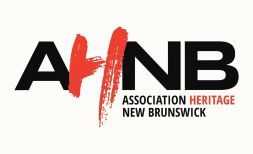GENERAL
Type / PurposeGolf course
132 St. Andrews Street, Woodstock, New Brunswick
The Woodstock Golf and Curling Club is a 9-hole golf course, located near the center of Woodstock. The course is approximatively 19 hectares in size, and has several natural hazards such as an evergreen forest and swampy spots. At the course's entrance is a large spruce log cabin with a wide veranda on three sides.
The Woodstock Golf and Curling Club is recognized for its association with golfing in Woodstock.
The history of golfing in Woodstock began in 1887, when Rev. G. D. Ireland, the Scottish minister of the local Presbyterian Church, introduced the sport to the community. A group of enthusiasts quickly formed, and in June of that year they met together at the American Consulate to officially establish the Woodstock Golf Club. Wanting to make the sport more accessible, they pooled together to purchase the necessary land. By the end of the year, the course was open to the public.
Thirteen years after its initial opening, in 1900, the course was redesigned by John Peacock, a professional golfer from the renowned St. Andrews-by-the-Sea Algonquin course.
In 1922, a clubhouse made of peeled spruce logs was erected at the highest elevation of the course. This building is divided into men’s and ladies’ locker rooms, as well as a kitchen. It also had a large stone fireplace at one end, with long windows on either side. A wide veranda stretched along three sides of the building. Additionally, a report in "A Woodstock album, 1922" makes note of the stuffed heads of moose, caribou, and deer hanging on the walls, gifted to the facility by various lodge members.
For many years, the clubhouse hosted fortnightly tea parties. According to the 1922 album, more than a hundred lodge members would regularly attend these events, where they would be served tea and home-made meals by the club's hostesses. Club dances were also a common sight.
Lastly, as an interesting side note, the course played a role during the Prohibition era. During this time, there was a revenue inspector who, upon finding confiscated whisky, would pour out the bottles' contents on the course's first hole. Over time, the ground around the hole grew misshapen, and it became known as ‘Whisky Hollow’ by locals.
Municipal Register of Local Historic Places (2006/07/07)
ARCHITECTURE
Date of Construction1887 (original course), 1900 (redesign by John Peacock), 1922 (clubhouse)
For the course:
- Approximately 19 hectares of land
- Location near the heart of Woodstock, close the downtown and residential areas
- Various natural hazards, such as swampy spots and an evergreen forest
For the clubhouse:
- Location near the highest elevation of the course
- Construction of peeled spruce logs
- Wide veranda along three sides of the building
- Two French windows by the veranda
- Large stone fireplace with windows on either side
- Redesign in 1900 by John Peacock
- Clubhouse added in 1922
Unknown (original design), John Peacock (1900 redesign)
SOURCES AND DOCUMENTS
Links/Related Content Photos
Photograph by the Carleton County Historical Society, taken from the Canada's Historic Places website
Sources Contributors
Gabrielle Byrne


